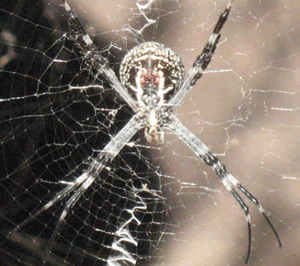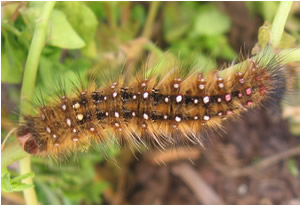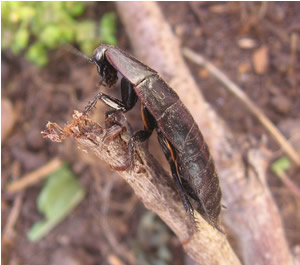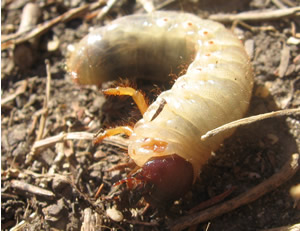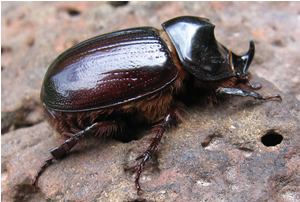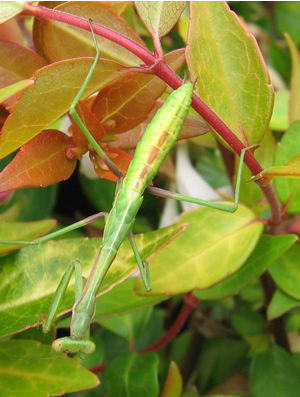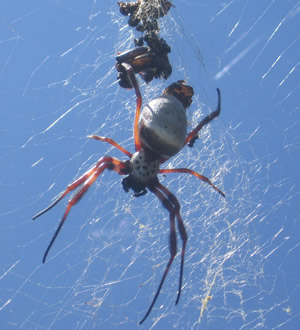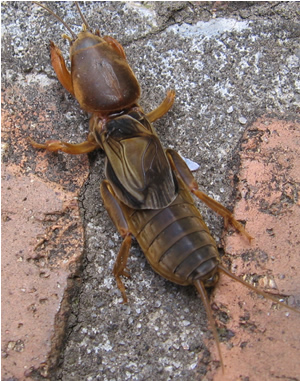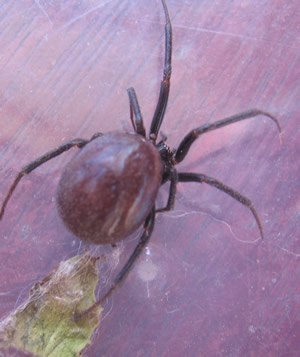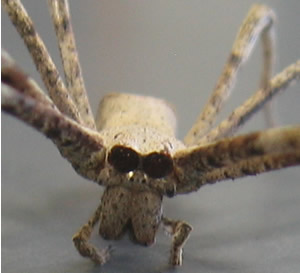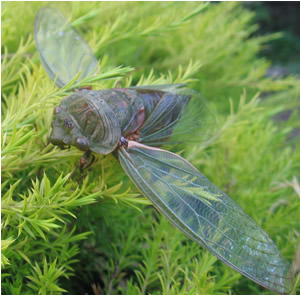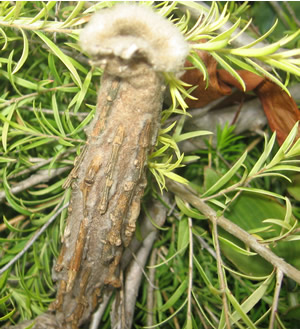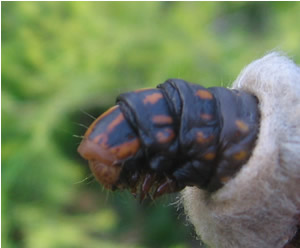Insects in your backyard.
In your backyard you will find many wonderful mini beasts. You will see the ferocious carnivorous insects such as the spiders and the mantids and hear the deafening sounds of the cicada.
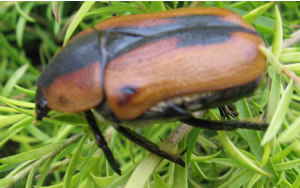
During the summer
months you may find
trees infested with the insect pictured on the right. What is the food
source for this insect?
What is it called?
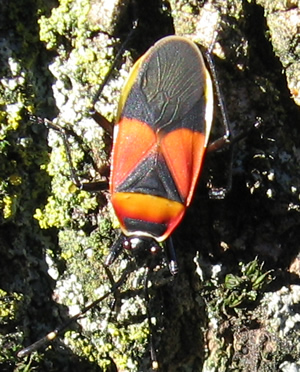
What is a larva?
Describe the features of the adult?
Cockroaches are scavengers and eat scraps.
Where do you find these insects?
Are they more abundant in summer or winter?
If you catch a cockroach draw its body structure.
Lawn mowers, weed killer
and general cleaning of long grass has meant that grasshoppers are rare
in the suburbs.
If you find one, draw its features.
Always keep with plenty of food (grass).
The larva of the rhinoceros beetle is pictured on the right. The function of the larva is to eat as much as it possibly can. It feeds on dead and rotting wood. It is an important contributor to the recycling of organic matter.
Click to see a magnified view.
The rhinoceros
beetle is active during the night. During the day it hides under logs
where it is safe from predators such as lizards and birds. The rhinoceros
beetle feeds on sap and rotting fruit. Despite its size it does no eat
much. The larva, on the other hand, eats a great deal.
Click
to see the underside of the beetle. Some beetles have amazing colours
A praying mantis is a carnivorous insect. It will swoop and capture small insects. A praying mantis is not shy and will feast on its prey while you are watching. Note how it devours its prey.
Some creatures live underground and show unique adaptation to their environment. Notice the front legs of this mole beetle, they are adapted for digging. Does these creature have wings? If so are they functional?
Click to see the claws for digging.
White tail spider.
How many body segments can you see on spiders?
Cephalo is Greek for head while thorax means chest. What part is the cephalothorax?
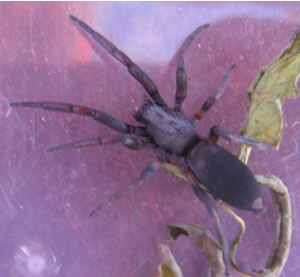
The crucifix spider shown on the right is found in tropical regions of Australia. This one was taken in Arnhem Land NT.
